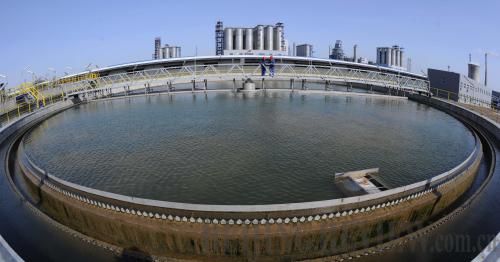|
 |
|
CLEAN PRODUCTION: Facilities for desalination of seawater are in use in Tianjin. As part of an ethene project, investment designated for clean production and environmental protection reached 2 billion yuan ($293 million (LIU HAIFENG) |
"The emissions of sulfur dioxide, nitrogen oxides and soot per unit of electricity generated in 2010 will be reduced by 66 percent, 16 percent and 56 percent, respectively, compared with 2005 levels. And in 2020, emissions will be reduced by 73 percent, 50 percent and 76 percent from 2005 levels." This is the commitment of China Huaneng Group, the country's largest central SOE in the electricity sector, which has been incorporated into the category of key monitoring by the SASAC. Many central SOEs are following suit with intentions to carry out green action campaigns in succession.
Unsatisfactory situation
On June 17, 2009, the National Audit Office published a report on energy saving and emission reductions by 41 central SOEs in 2006-07. The report indicated the results were less than satisfactory.
The 41 surveyed enterprises were selected from nearly 1,000 enterprises under key monitoring by the country, including 16 electricity companies, 13 petrochemical companies and 12 steel and non-ferrous metals companies. Although the 41 central SOEs made progress, the report outlined certain problem areas that needed attention.
First, some enterprises did not close and eliminate high energy-consuming equipment as instructed by the government. In some enterprises, the desulphurization facilities for the completed projects were not ready on time, while in other enterprises, the desulphurization facilities did not operate stably after completion.
Second, some enterprises imposed hidden risks on the environment by improperly disposing of their solid wastes. According to state stipulations, enterprises should carry out bio-safety disposal of their solid wastes and hand over the dangerous wastes to certified waste disposal enterprises. The national auditor found that some enterprises failed to strictly implement these stipulations.
The auditing report pinpointed the blame for enterprise inefficiencies on a select group of individuals: executives who weren't involved in environmental efforts within their companies. Now to maintain their benefits, executives must strengthen and monitor efforts in energy saving and emission reduction.
Later this year the country's auditing authority will publish its results for central SOEs in 2007-08.
According to statistics from the National Development and Reform Commission, in 2008 the comprehensive energy consumption in comparable prices per 10,000 yuan ($1,464) of output value by central SOEs decreased by 10.23 percent from 2005 figures, while emissions of carbon dioxide and chemical oxygen demand decreased by 28.82 percent and 23.15 percent, respectively.
Such figures show that although central SOEs have made some progress in saving energy and reducing emissions in 2008, more can be done. And facing more severe repercussions, central SOEs will be more likely to commit to China's green efforts. | 